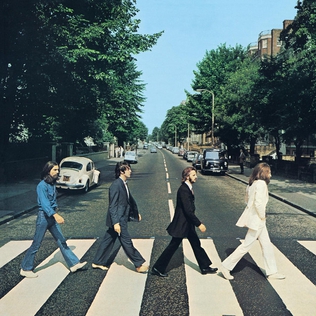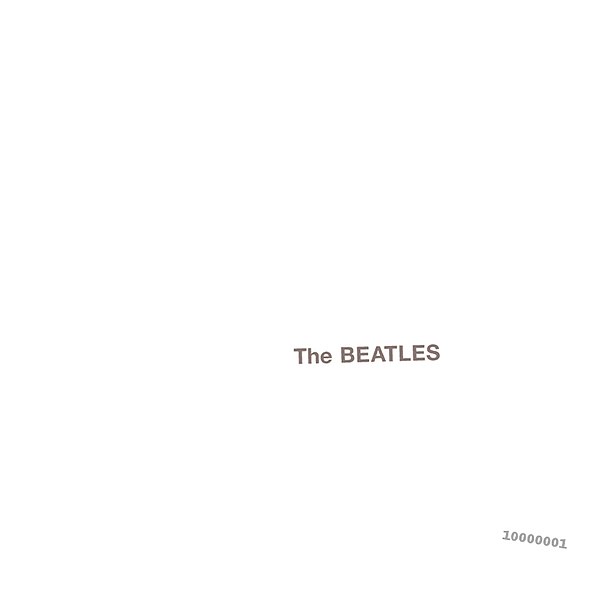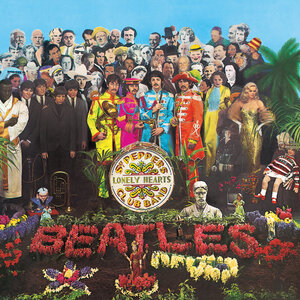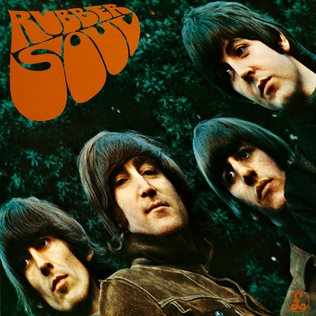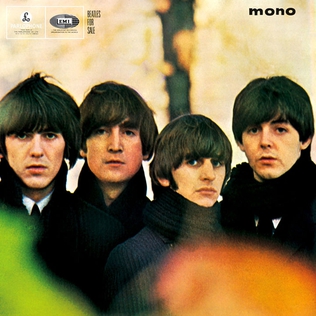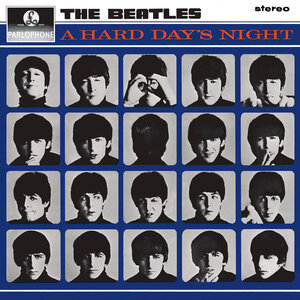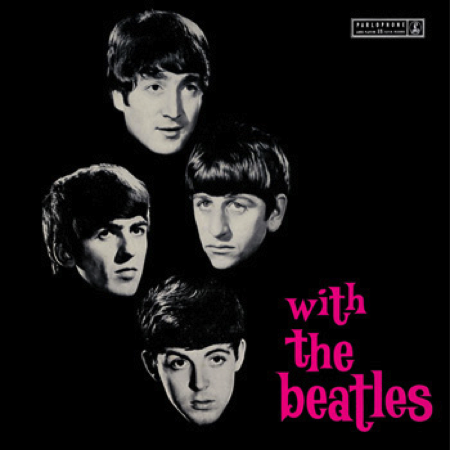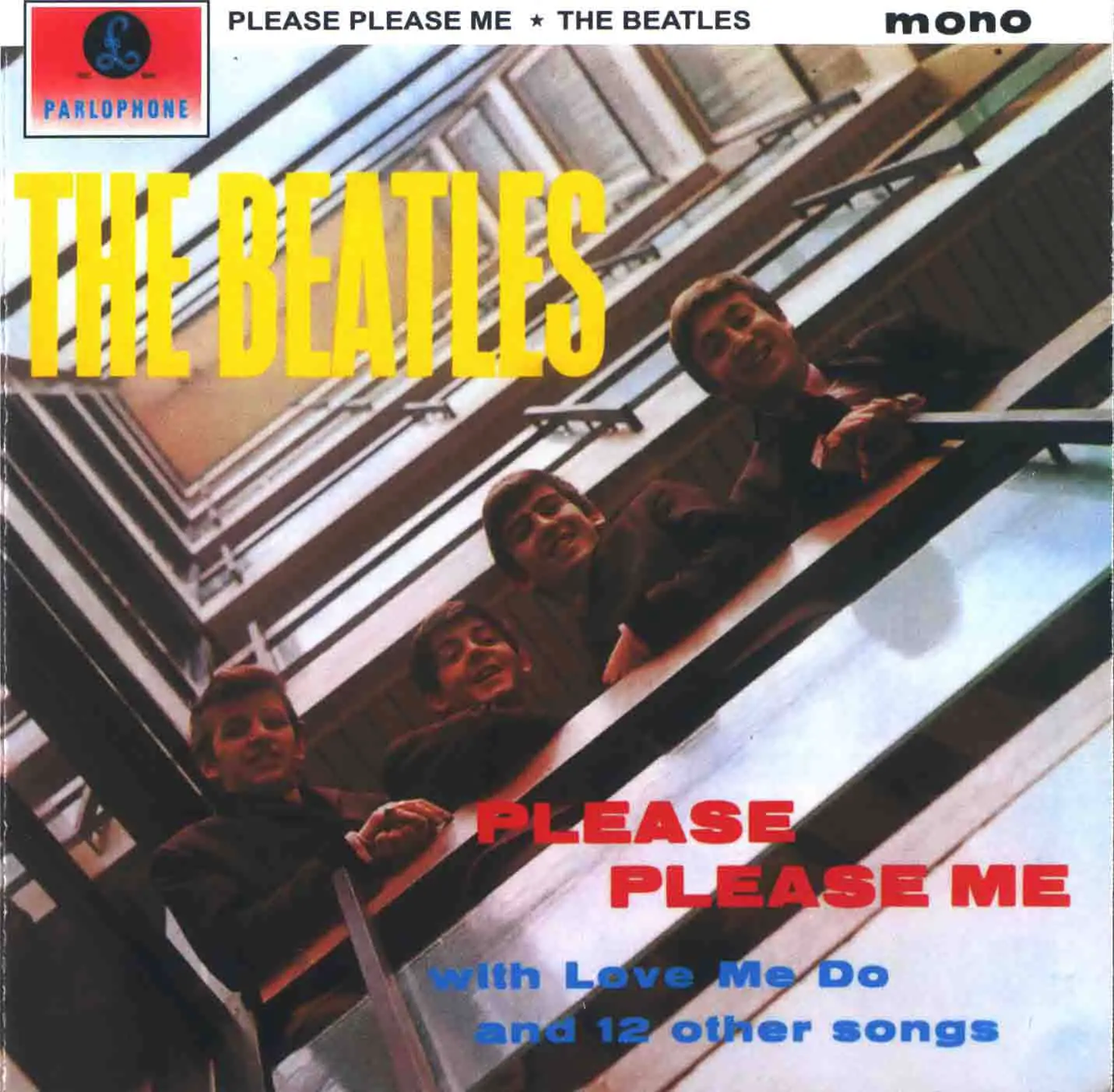Throwback Thursday: Abbey Road
It is perhaps the most well-known album - 1969's Abbey Road marks the end of the journey for the Fab Four. Although released before Let it Be, it was recorded last, before John, Paul, George and Ringo went their separate ways. After disastrous and tense Get Back recording sessions (later salvaged to become Let it Be) the group thought they would have one last shot at recording, in a much more comfortable environment - their home at EMI's Abbey Road Studios.
Featuring seventeen songs, the album is an eclectic mix of different music styles. From the metal-esque sounds on "I Want You (She's So Heavy)" to the tantalising nine part harmony on "Because", Abbey Road contains many different sounds which work so well together. Side two includes the medley, containing "You Never Give Me Your Money", "Sun King", "Mean Mr. Mustard", "Polythene Pam", "She Came in Through the Bathroom Window", "Carry That Weight" and "The End". Also included on the album is Ringo Starr's second solo composition (with help from George Harrison), "Octopus's Garden" and the two singles from the album, John's "Come Together" and George's "Something". "Something" was released as the A-side of the single, Harrison's first composition to be so.
The iconic album cover - the only of The Beatles' albums to not have any words on the cover - further fuelled rumours of the increasingly popular 'Paul is dead' theory (see our previous post on it). Fun fact: the white Volkswagen Beetle seen behind George was supposed to be removed by its owner before photographing took place but he was away. The car is now an image associated with the album cover. Abbey Road is ranked at number 14 on Rolling Stone's list of the 500 Greatest Albums of All Time.
Throwback Thursday: Yellow Submarine
In the town where I was born... these famous opening lyrics come from the Fabs' 1966 single "Yellow Submarine" which was then, in 1968, used as a basis for the animated film of the same name. Whilst the movie had little contribution from the group (apart from the songs and a cameo at the end), the soundtrack, released on January 17, 1969, is known as their tenth studio album.
Similarly to their earlier albums, Yellow Submarine contains thirteen songs - eleven original 1968 compositions, "Yellow Submarine" which was released on Revolver and "All You Need Is Love" which was a single and on Magical Mystery Tour the year earlier. In addition to the two aforementioned tracks, the first side of the record contains four new songs. George Harrison contributes "It's All Too Much" and "Only a Northern Song", both recorded and discarded during the 1967 Sgt. Pepper sessions. "Hey Bulldog" and "All Together Now", contributed by the two front songwriters, were both written with the film in mind. Primarily Lennon-penned "Hey Bulldog" was recorded whilst filming a promotional video for the single "Lady Madonna".
The second side of the album is exclusively instrumental, with seven new compositions by The Beatles' producer George Martin arranged specifically as the film score. The only lead vocals drummer Ringo Starr contribute are those the titular song, "Yellow Submarine", although recorded two years earlier.
Yellow Submarine is perhaps the least well-received of all Beatles albums, in contrast to the accompanying film which has been praised. The four new songs (which were not instrumental) were deemed mediocre in comparison to the usual standard expected from the biggest group in the world.
 |
| The Beatles cameoing at the end of Yellow Submarine, an introduction to "All Together Now" |
Unique to this Beatles album: it is the only album to contain 'Beatles' songs which were not written by any of the members and were also not covers (I.E. written by someone else specifically for the album)
Pick the Beatles References Answers
One of our most popular posts has been our Pick the Beatles References post, which is a drawing by Ron Manges featuring references to 70 Beatles songs. Unfortunately, the answers can no longer be found on Ron's website, so I have gone through the illustration and identified 64 out of 70 of the references (I hope they are all correct!). With six remaining, I hope you guys can help me find them!
Here is the original:
And here are my answers:
Here is the original:
And here are my answers:
- Sun King
- For No One
- Twist and Shout
- The Fool on the Hill
- Rain
- The Long and Winding Road
- Lucy in the Sky With Diamonds
- Carry That Weight
- While My Guitar Gently Weeps
- Glass Onion
- One After 909
- Yesterday
- I'll Follow the Sun
- She Came in Through the Bathroom Window
- Mean Mr Mustard
- Lovely Rita
- I Am the Walrus
- Helter Skelter
- Strawberry Fields Forever
- Being for the Benefit or Mr Kite!
- Octopus's Garden
- From Me To You
- Help!
- Yellow Submarine
- Love You To
- Ticket to Ride
- Three Cool Cats
- Can't Buy Me Love
- Birthday
- I Want You (She's So Heavy)
- Blackbird
- Maxwell's Silver Hammer
- Piggies
- Dig a Pony
- Hey Bulldog
- You've Got to Hide Your Love Away
- I'll Be Back
- She's Leaving Home
- Fixing a Hole
- Norwegian Wood (This Bird Has Flown)
- Rocky Raccoon
- Sgt. Pepper's Lonely Hearts Club Band
- Michelle
- Drive My Car
- I Want to Hold Your Hand
- Everybody's Got Something to Hide Except Me and My Monkey
- Chains
- Kansas City/Hey-Hey-Hey-Hey!
- Good Night
- Eight Days a Week
- Free as a Bird
- Hello, Goodbye
- Because
- Golden Slumbers
- Do You Want to Know a Secret
- No Reply
- Flying
- Why Don't We Do It In the Road?
- Across the Universe
- I've Just Seen a Face
- The Word
- Mr Moonlight
- The End
- Run For Your Life
UPDATE: turns out Ron Manges does have the answers on his site!
In regards to my answers, the six I missed turned out to be:
65: The Inner Light; 66: Money (That's What I Want); 67: Lady Madonna; 68: The Hippy Hippy Shake (no wonder I didn't get it!); 69: Revolution; 70: I'm Looking Through You
Additionally, what I had as 55 (Do You Want to Know a Secret) actually turned out to be part of Everybody's Got Something to Hide Except Me and My Monkey, so please correct me if I'm wrong, but that is 69! Is there another hidden clue? Also, 61 was not The Word, but rather Words of Love (I feel that both work though as the lyrics of The Word go: "the word is love").
Paul's 30 Best Post-Beatles Singles
An American journalist has recently published their list of Macca's top 30 post-Beatles singles, including Wings and solo tracks. One day we'll get around to listing our favourites, but for now let's see what they have to say.
- Maybe I'm Amazed (1977)
- Uncle Albert/Admiral Halsey (1971)
- Band on the Run (1973)
- The Back Seat of My Car (1971)
- Another Day (1971)
- Jet (1973)
- Coming Up (1980)
- Fine Line (2005)
- Old Siam, Sir (1979)
- No More Lonely Nights (1984)
- Silly Love Songs (1976)
- I've Had Enough (1978)
- Letting Go (1975)
- Helen Wheels (1972)
- Goodnight Tonight (1979)
- Arrow Through Me (1979)
- New (2013)
- Live and Let Die (1973)
- My Love (1973)
- Waterfalls (1980)
- Junior's Farm (1974)
- Venus and Mars/Rock Show (1975)
- Getting Closer (1979)
- Jenny Wren (2005)
- Hi Hi Hi (1972)
- My Brave Face (1989)
- With a Little Luck (1978)
- Temporary Secretary (1980)
- Young Boy (1977)
- This One (1989)
Do you agree? What are your favourites?
Paul Calls off Japan Tour
Paul McCartney has recently made a public announcement on social media letting his fans know that he has come down with a virus. He postponed a Tokyo concert on the 18th of May after contracting the virus with hopes to continue the rest of his shows in Japan. However, he did not recover overnight like he hoped and has been forced to cancel the rest of the Japanese leg of the tour with doctors' orders for bed rest. Paul has since plighted his sincerest apologies to his Japanese fans as he is very upset to be letting them down. The postponed concerts are hoped to be rescheduled at a later date.
Paul Tours the U.S.
Sir Paul has recently announced a large lineup of concerts in the U.S. this year as part of his Out There! tour. So far he has 17 concerts lined up with four of them already sold out! Check out the dates and locations below.
June 14: Lubbock, TX - United Spirit Arena
June 16: Dallas, TX - American Airlines Center
June 19: New Orleans, LA – Smoothie King Center (SOLD OUT)
June 21: Atlanta, GA - Philips Arena
June 22: Jacksonville, FL - Jacksonville Veterans Memorial Arena
June 25: Nashville, TN - Bridgestone Arena
June 26: Louisville, KY – Yum! Center (SOLD OUT)
July 5: Albany, NY – Times Union Center (SOLD OUT)
July 7: Pittsburgh, PA – Consol Energy Center (SOLD OUT)
July 9: Chicago, IL - United Center
July 12: Fargo, ND - Fargodome
July 14: Lincoln, NE - Pinnacle Bank Arena
July 16: Kansas City, MO - Sprint Center
August 2: Minneapolis, MN - Target Field
August 7: Salt Lake City, UT - EnergySolutions Arena
August 10: Los Angeles, CA - Dodgers Stadium
August 14: San Francisco, CA - Candlestick Park
June 14: Lubbock, TX - United Spirit Arena
June 16: Dallas, TX - American Airlines Center
June 19: New Orleans, LA – Smoothie King Center (SOLD OUT)
June 21: Atlanta, GA - Philips Arena
June 22: Jacksonville, FL - Jacksonville Veterans Memorial Arena
June 25: Nashville, TN - Bridgestone Arena
June 26: Louisville, KY – Yum! Center (SOLD OUT)
July 5: Albany, NY – Times Union Center (SOLD OUT)
July 7: Pittsburgh, PA – Consol Energy Center (SOLD OUT)
July 9: Chicago, IL - United Center
July 12: Fargo, ND - Fargodome
July 14: Lincoln, NE - Pinnacle Bank Arena
July 16: Kansas City, MO - Sprint Center
August 2: Minneapolis, MN - Target Field
August 7: Salt Lake City, UT - EnergySolutions Arena
August 10: Los Angeles, CA - Dodgers Stadium
August 14: San Francisco, CA - Candlestick Park
Throwback Thursday: The Beatles
Though the Fabs' tenth album is actually self-titled (as The Beatles), it is more commonly known as its appropriately-dubbed name The White Album. Whilst the plain cover itself is somewhat bland, there is a key feature unique to an album cover. On the sleeve for all the original records released the title "The BEATLES" is embossed, rather than printed, and each album has an individual serial number. Additionally special to this album is the fact that it is a double album, and one of the first to be released by contemporary popular artists (other artists such as Johnny Cash and Bob Dylan released double albums around the same time). The White Album was released on November 22nd, 1968, being the only album for the group that year.
Being a double album, it contains double the amount of songs than a regular album - 30 in total (disc one has 17, disc two has 13). Most of the songs were recorded with less than all four members performing, and many were 'solo' recordings. Ringo left the band briefly (but was coaxed back), meaning that Paul had to play the drums on the two opening tracks, "Back in the U.S.S.R." and "Dear Prudence". Everyone was basically doing their own thing and exploring their individual talents. The White Album introduces Ringo's first solo composition, "Don't Pass Me By". He also lends his vocals to last track "Good Night".
Previously only getting one to three of his songs on an album, George contributed four to the double album: "Savoy Truffle", "Piggies" and the often overlooked "Long Long Long". One of the most-loved and famous Beatles songs, "While My Guitar Gently Weeps", is his fourth contribution. Eric Clapton plays lead guitar on the track. Third track "Glass Onion" references earlier Beatles songs "I am the Walrus", "The Fool on the Hill", "Fixing a Hole", "Strawberry Fields Forever" and "Lady Madonna" (released as a single in 1968).
Some of the songs were written whilst The Beatles were visiting the Maharishi in India. These include Lennon's "Sexy Sadie" (originally titled "Maharishi" with crude lyrics), "Dear Prudence", (written about Mia Farrow's sister) "Why Don't We Do It in the Road?" and "The Continuing Story of Bungalow Bill" (which marks the only occasion when a female sings lead at all on any Beatles songs, with Yoko Ono singing the line "Not when he looks so fierce"). The album also includes the highly experimental track "Revolution 9", which is referred to as a 'sound collage'.
Four songs were recorded during the White Album sessions which were released as 1968's singles - "Revolution", "Hey Jude", "Lady Madonna" and "The Inner Light" (a Harrison composition featuring the sitar). "Hey Bulldog" was also recorded at this time but wasn't released until the following year on the Yellow Submarine album.
Unique to this Beatles album: The Beatles is the only double album released by the band.
Product of 1969
1969 was a big year. In Beatles history it was the year Abbey Road was released and the year they officially broke up. Other historical events included the moon landing and, most likely, the birth of either you or someone you know. To celebrate 45 years this year, why not get a fun commemorative professionally designed t-shirt? Click here to order one now!
Throwback Thursday: Magical Mystery Tour
Roll up, roll up for the Magical Mystery Tour, step right this way!
These are the unmistakable opening lyrics of "Magical Mystery Tour" which, like it's predecessors A Hard Day's Night and Help!, shares its title with an album and a film. The studio album, released on Boxing Day of 1967, is actually the soundtrack to the film. The idea came about when, after the success of Sgt. Pepper, Paul (unsurprisingly) suggested that the band make an unscripted film about their music. The ultimate result was a bunch of ordinary people, and the Beatles themselves, traveling on a coach going on different 'magical' adventures - all in all equating to a lot of nonsense. Whilst the film was not admired by critics (or many people, really), it's still a favourite amongst diehard Beatles fans.
The film contained six Beatles compositions including "The Fool on the Hill", "Blue Jay Way" (Harrison's only contribution to the film/album), "Your Mother Should Know", "Flying" (an instrumental piece credited to Lennon/McCartney/Harrison/Starkey), well-known favourite "I Am the Walrus" and, of course, the titular track, opening the film. These six songs make up the first side of the soundtrack/LP, which is the shortest album for the group, totalling only 11 songs.
The remaining five songs released on the soundtrack were not written with the film (or an album) in mind and were, in fact, 1967's singles thrown onto the record. "Hello, Goodbye", "Baby You're a Rich Man", "Penny Lane" and "Strawberry Fields Forever" were the singles the group released in 1967 and are, of course, well-known and liked. Ah, but we can't forget perhaps The Beatles' most universally-known and quoted song - "All You Need is Love", of course, was the fifth single for 1967 and the final track on the record. The song was actually performed on a live broadcast via satellite to 26 different countries.
Whilst Magical Mystery Tour is considered one of The Beatles' thirteen studio albums, the 11-tracked soundtrack version was actually initially only released in the US whilst in the UK a double EP was released consisting only of the six songs actually in the film.
Unique to this Beatles album: technically it's not one of their studio albums as the LP was only released in America.
Throwback Thursday: Sgt. Pepper's Lonely Hearts Club Band
Everyone knows it. It's only Rolling Stone magazine's listed number one greatest album of all time. It was 46 years, 9 months and 26 days ago today! Sgt. Pepper told the band to play! They've been going in and out of style, and they're guaranteed to raise a smile. 46 years, 9 months and 26 days is the exact duration from when the legendary album was released (June 1st 1967) and today (March 27th 2014). And they certainly have not gone out of style!
The concept came about from an idea Paul had of recording an album as a fictitious band (with the leader supposed to be Sgt. Pepper). The only 'band member' who is actually named is Billy Shears, the pseudonym of Ringo Starr. The opening track shares a title with the album, and it introduces the band before segueing into "With a Little Help From My Friends" and introducing Billy Shears. Paul and John wrote the song specifically for Ringo to sing. However this alter ego concept ended with the opening two songs and the titular reprise second-last on the album. The idea was quickly abandoned and, whilst the remaining songs on the record are extraordinary, they bear no connection to the idea.
The sitar makes an appearance once again with George's sole piece on the album, "Within You Without You". Fun fact: the album was influenced by the Beach Boys' 1966 album Pet Sounds, which itself was influenced by Rubber Soul. This influence can be seen on "Good Morning Good Morning" with the animal sounds. A popular song from the album, "Lucy In the Sky With Diamonds", was written by John about a drawing his son Julian had showed him, contrary to popular belief. The entire lyrics of "Being For the Benefit of Mr Kite!" were derived from an 1843 circus poster that John had purchased from an antiques shop. The track also features a middle of various recording tapes chopped and mixed up to give the whimsical tunes heard. A similar technique was used on Revolver's "Tomorrow Never Knows". Other tracks on the album include "Fixing a Hole", "She's Leaving Home", "Lovely Rita", "Getting Better" and "When I'm Sixty-Four".
Perhaps (or very likely) the most loved and well-known performance, not just from this album but of all Beatles songs, is "A Day in the Life". It has been named the number one Beatles song and number 28 in Rolling Stone's list of greatest songs. The last track on the album, it incorporates a forty-piece orchestra, heard in the middle of the song and on the famous final chord, which rings out for over forty seconds. There are two distinct parts of the song - John's (verses) and Paul's (middle). At the end of the song, amongst random studio chatter, is a very high-pitched dog whistle.
The album cover collage contains around sixty people including Ghandi, Marilyn Monroe, Shirley Temple, Edgar Allen Poe, Sigmund Freud, Lewis Carroll and original bassist Stuart Sutcliffe. Lennon wanted to include Jesus and Adolf Hitler but were ultimately left out of the final product. To the left of the Beatles themselves, you can see wax models of them. There are supposedly various 'clues' on the album sleeve which contribute to the 'Paul is Dead' theory.
Unique to this Beatles album: many many many things.
A Guy in Uruguay
Following on from previous announcements about tours in Costa Rica, Chile, Ecuador and Peru, Sir Paul has now announced another location - Uruguay! It's seems South America are the lucky ones this time around. Maybe he should keep this southern hemispherical theme and move west... there's a very large country with a very large fan base here waiting for you, Paul!
Throwback Thursday: Revolver
Whilst many of the songs are much-loved and well-known (the likes of "Eleanor Rigby" and "Yellow Submarine"), it's the lesser-known, more obscure compositions which exhibited fresh musical techniques and styles. Harrison plays the sitar on his track "Love You To", much like he did the previous year on Rubber Soul's "Norwegian Wood". Harrison also contributed opening track "Taxman" and "I Want To Tell You". Adding to the list of 'firsts' that The Beatles provided to the musical world, Lennon's "I'm Only Sleeping" contains a guitar solo - but not just any guitar solo. Oh no, it's a backwards guitar solo, played by Harrison, created by running the tape backwards. This was a unique technique in 1966. "Tomorrow Never Knows" may be the most experimental one, with the entire song consisting of different random tapes looped and played in odd sequences, with the final result being sounds such as the 'seagull' sound heard throughout the song.
Many are under the impression that drummer Ringo penned the popular "Yellow Submarine" due to his deep baritone vocals dominating the tune. In actual fact, Paul dreamed up the song with Ringo in mind. Of course, the immensely popular single went on to become an animated film and an album for the quartet, released three years later.
The album cover illustration was created by bassist Klaus Voormann, an old friend of the group whom they'd met in their Hamburg days. The artwork is a mixture between line drawings and photo collages. Voormann's name can be seen woven into the right side of Harrison's hair. There are certainly many aspects of Revolver which make it unforgettable, loveable and revolutionary.
Unique to this Beatles album: the album features the first backwards guitar solo, seen on "I'm Only Sleeping"
Paul Does South America
Following on from last year's Out There tour, Sir Paul has recently announced some new tour destinations, set to take place in April this year. This time around Paul is heading south... South America, that is, with concerts lined up in Chile, Peru, Costa Rica and Ecuador. It seems, in typical Paul McCartney fashion (much like last year), the dates and locations are being revealed periodically, usually one at a time. We are anxious to see where he is heading next and if (hopefully) it's on other continents too! Watch this space for more tour information.
Throwback Thursday: Rubber Soul
The sensational sixth album for the even more sensational stars proved to be the start of something new for the group. Rubber Soul was the starting point for the band's new direction. It is the second album to feature only originals, the first being A Hard Day's Night. The record was released on 3 December 1965, only fours months after Help! The album is considered to be folk rock, also incorporating pop and soul styles. The immense success and popularity of this much-loved album is proven by its ranking at 5th on Rolling Stone magazine's "500 Greatest Albums of All Time", trailing only future albums Revolver and Sgt. Pepper's Lonely Hearts Club Band, which would be the band's next two respective albums.
Influences for the music on Rubber Soul include Bob Dylan and The Beach Boys. A key feature that makes this album so revolutionary is a single song - Lennon's "Norwegian Wood (This Bird Has Flown)" featured the sitar, an Indian instrument, played by Harrison. He had been introduced to the sitar whilst filming Help! Thanks to George and his sitar, it is thought that "Norwegian Wood" sparked the craze for Indian rock and raga rock and the distinctive style of the mid-60s.
New and inventive exotic styles can be seen further on the album on tracks such as "Michelle" (which contains French lyrics) and "I'm Looking Through You" (in which Starr taps on a matchbook to create a beat). "In My Life", a Lennon song inspired by his childhood and memories, interestingly features producer George Martin on the piano. Lennon requested for the instrumental piano solo that Martin play something "Baroque-sounding", which proved impossible for Martin to do at the song's current tempo. His piano solo was sped up and made to be an octave higher, giving it sound much like a harpsichord. Harrison's contributions were "If I Needed Someone" and "Think For Yourself". Starr's lead vocals appear on "What Goes On", an early song which is credited to Lennon-McCartney-Starkey.
The photograph on the album cover has a distinctive slope or stretched appearance. This came about when the photographer projected the photos onto a piece of cardboard. When the cardboard fell backwards, the result was what is seen on the cover. The Beatles asked him to make the cover exactly like what they saw. Additionally, it is the first of their albums to not feature their name on the cover, an unusual tactic for 1965.
Unique to this Beatles album: an Indian sitar is played on "Norwegian Wood", introducing non-Western instruments into Western music.
Throwback Thursday: Help!
Help! is the quinary album for the quixotic quartet, and their quirky second film. It was released on 6 August 1965, eight months after previous LP Beatles for Sale. The seven tracks on side one of the vinyl double as the soundtrack to the film. Singles "Help!" and "Ticket to Ride" are found on this side. Across the fourteen tracks, there is a diverse range of music styles exhibited. McCartney-penned "I've Just Seen a Face" can be considered to be country. Bob Dylan's influence on Lennon shows up again in "You've Got to Hide Your Love Away", a composition also found in the film.
Harrison hadn't contributed a song to an album since "Don't Bother Me" on With the Beatles in 1963. The youngest member offers two tracks this time around - "I Need You", which has its own sequence in the film, and "You Like Me Too Much". A stand-out song from this album (though on side two) is "Yesterday", notable for being recorded solely by McCartney and orchestral musicians without the other three Beatles present. The iconic song has since gone on to be the most-covered of all time. In addition, Help! was the last Beatles album to contain any cover songs - "Act Naturally" (which was Starr's vocal contribution) and "Dizzy Miss Lizzy".
The album cover features the four with their arms spelling out a word in flag semaphore. The idea was to have "HELP" spelled out, however when the cover was photographed, the four letters did not look appealing. The end result, found on the cover, does not spell out anything (it actually spells NUJV) - it was chosen simply for its graphic appeal. The outfits worn on the cover are from a sequence in the film where they are playing around in the snow and during the "Ticket to Ride" sequence.
The feature film, which was released on 29 July, was directed by Richard Lester, who also directed the group's first film A Hard Day's Night. It was filmed entirely in colour, with locations for filming including the Swiss Alps and the Bahamas.
Unique to this Beatles album: it is the last album to feature cover songs - "Dizzy Miss Lizzy" and "Act Naturally" (though Let it Be's "Maggie Mae" is an exception).
Throwback Thursday: Beatles for Sale
Beatles for Sale is album four for the Fab Four, released on December 4, 1964 (that's a lot of fours). Like most of The Beatles' albums, it contains fourteen tracks. Just like previous albums, it has six covers: "Everybody's Trying to Be My Baby", "Words of Love", "Rock and Roll Music", "Mr Moonlight", medley "Kansas City/Hey-Hey-Hey-Hey!" and "Honey Don't", sung by drummer Ringo Starr. George Harrison lends his vocals on this album to only "Everybody's Trying to Be My Baby" while usually he would sing lead on two songs. Track 2 "I'm a Loser", primarily penned by John Lennon, is said to be influenced by the distinctive style of Bob Dylan, who the group had met in August.
Many tracks have sombre and sad tones and lyrics to them. The songwriters themselves have been found to be dismissive of and are not too fond of some of the tracks. McCartney dismissed his song "What You're Doing" as "a bit of a filler". Similarly, Lennon referred to "Eight Days a Week" as "lousy", despite the popularity of both these songs.
1964 was such a colossal year for the Fab Four. Their world tours and frequent performances at the height of Beatlemania, and the fact that that year they had already recorded an album and made a movie, were main contributing factors to this. As a result, the boys became weary, as can be seen on the album cover, which was photographed by Robert Freeman (he also took the photographs for the covers of With the Beatles, Help! and Rubber Soul). Much of the songwriting for the album had to be done in the recording studios as their tight schedule allowed for little spare time to do so.
As to be expected, the album met with a positive reaction from fans. Concurrently, it remained on the top of the charts in the UK during the rest of 1964 and in 1965 until it was knocked off the top spot by successor album Help! The album was also not released in the US until 1987. Instead, another album, Beatles '65, was released, containing only eight of Beatles for Sale's songs. Again, similarly to With the Beatles, the album art was different for the Australian release. The cover used by EMI Australia is quite different to the original - it contains pictures of the four performing in Sydney earlier that year. No singles were produced from this album (except "Eight Days a Week", which was released in America).
Unique to this Beatles album: it contains the only medley released as one track on a studio album - "Kansas City/Hey-Hey-Hey-Hey!".
 |
| The Australian album cover |
Yoko Oh-no She's Dancing!
John Lennon's widow, Yoko Ono, has been seen recently busting some moves at both this year's Grammy awards and the 50th anniversary concert honouring The Beatles' first visit to America (especially their performances on the Ed Sullivan Show). Fans of the 81-year-old questioned her questionable dancing. Read an article here about it and watch a clip of some of her moves, repeated and in slow-mo!
Throwback Thursday: A Hard Day's Night
A Hard Day's Night is different from every other Beatles album in a single interesting way - it is the only album to solely feature Lennon/McCartney compositions. All thirteen tracks are originals from the dynamic duo, with no covers. Recorded mainly in early 1964, the record was released on 10 July 1964. Two singles are products of the album - "Can't Buy Me Love", backed by "You Can't Do That" and "A Hard Day's Night", backed by "Things We Said Today". The title of the album, and titular song, was what was dubbed by Lennon as a 'Ringo-ism', a funny line that Starr had said in passing.
The first track on the album, sharing its name, is immediately recognisable by its obscure jaunty opening chord. The chord, which was played on Harrison's 12-string Rickenbacker, opens both the album/song and the film. There has been much debate about which chord it actually is. It has been said to be a G7sus4, Dm7sus4 and an Fadd9 (as described by Harrison in 2001), among others.
A Hard Day's Night also marks the first (and only, apart from Magical Mystery Tour and Let It Be) album to not feature a song sung by drummer Ringo. Only one song, "I'm Happy Just to Dance With You", is sung lead by George Harrison. The rest of the tracks are either sung by Paul or John, or both, with an approximate even split.
Side one of the album (featuring tracks "A Hard Day's Night", "Can't Buy Me Love", "I Should Have Known Better", "If I Fell", "I'm Happy Just to Dance With You", "And I Love Her" and "Tell Me Why") is actually the soundtrack to the film of the same name. The black-and-white film was released four days before the album. The remaining six tracks found on the LP were not featured in the film. "Can't Buy Me Love" is notable for appearing twice in the film. A synopsis of the film can be read here. Fun fact: George Harrison met his future wife, Pattie Boyd, on the set of A Hard Day's Night. She was a schoolgirl extra in the train scene.
Unique to this Beatles album: this album is the only one to feature solely Lennon/McCartney compositions.
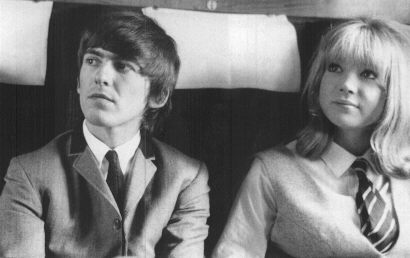 |
| George and Pattie on the set of A Hard Day's Night |
Throwback Thursday: With the Beatles
Following the success of their first album, it was only to be expected that another Beatles record would soon make its way to the shelves and the airwaves. In October 1963, eight months after the release of Please Please Me, The Beatles' second album, With the Beatles, was released. This time, however, they took their time and recorded the album over three months, unlike Please Please Me, which was recorded in one day.
With the Beatles featured the same amount of covers (six) and original songs (eight) as its predecessor, only this time one song, 'Don't Bother Me', was written by George Harrison. The song was his first solely-written composition to be recorded and to feature on a Beatles album. He also sang lead vocals on 'Roll Over Beethoven' and 'Devil in Her Heart', both covers. Ringo Starr sung lead on 'I Wanna Be Your Man', a Lennon-McCartney original. The rest of the songs are either sung by Lennon, McCartney or both with Harrison.
The album was not released in the United States until 1987. Instead, a separate album was released in 1964 called Meet the Beatles! The track listing was different to With the Beatles', however. Meet the Beatles! features nine of With the Beatles' songs as well as two 1963 singles ('This Boy' and 'I Want to Hold Your Hand') and 'I Saw Her Standing There' from Please Please Me, giving it a total of only twelve songs.
The album, ultimately, was a success. The album remained at number 1 on the UK charts for 21 weeks, knocking Please Please Me off the top spot. In 2003 Rolling Stone magazine ranked With the Beatles number 420 of the 500 greatest albums of all time.
Fun fact: EMI, the recording label of which Parlophone was under, in Australia never received the cover art for the album so they improvised and made their own, similar to the actual one, as seen below.
Unique to this Beatles album: it is the first album to feature a composition by George Harrison.
Paul and Ringo Rehearsing 'Queenie Eye'
Watch Paul McCartney and Ringo Starr rehearsing 'Queenie Eye', which they performed together recently at the Grammys. Listen to them say some heartwarming things about each other!
Throwback Thursday: Please Please Me
The cover of this 1963 album, featuring four soon-to-be legendary baby-faced early-twenties-year olds, is as well-known as the songs themselves. In fact, a picture from the same shoot was used for the cover of the 1962 - 1966 compilation album, and a 1969 recreation photo for the 1967 - 1970 album (both released in 1973).
October 1962 saw the release of The Beatles' first single, 'Love Me Do', with 'P.S. I Love You' as the B-side. As an interesting fact, this version of 'Love Me Do' (the second of three studio recordings) was the first released recording to feature all four Beatles. However, Ringo Starr played the tambourine instead of his designated instrument - session drummer Andy White played the drums. In January of the following year, their next single was released - 'Please Please Me', backed by 'Ask Me Why'. Due to the success of these two singles, an album was to be recorded and rush-released by recording label Parlophone.
The album is renowned for having been entirely recorded in just under thirteen hours. Standard 12" LPs contained fourteen songs and with four songs written already (the singles), the album required ten more. February 11, 1963 was the day that the entire album was recorded. Please Please Me contains eight songs written by dynamic duo Lennon/McCartney, whilst the remaining tracks were covers. In addition to their singles, Lennon and McCartney provided 'Misery', 'Do You Want to Know a Secret' (sung by George Harrison), 'There's a Place' and favourite 'I Saw Her Standing There'.
At the end of the day, after a hard day's work, it was time to record the last song - 'Twist and Shout'. Many would know the classic from 80s paradigm Ferris Bueller's Day Off but the fun fact behind its existence is relatively unknown to most people who are not die-hard Beatles fans. John had developed a cold and the song had to be performed last so as not to ruin his voice for the rest of the recordings. Producer George Martin was so impressed, that the first take is the one found on the album!
Released in March 1963, Please Please Me, The Beatles' first album, set the standard for the group and skyrocketed them into mega success in the UK and, later, the US. It only went uphill from there!
Unique to this Beatles album: it was recorded in one day.
Paul and Ringo Reunite at the 56th Grammy Awards
One half of The Beatles - Paul McCartney and Ringo Starr - performed together at the 56th Annual Grammy Awards on Sunday (January 26). They performed Paul's new hit Queenie Eye, and the both of them also performed separately on the night. Pauls' colourful piano used on stage is one from the Magical Mystery Tour era (1967) and was used on many of the 1967 songs. Watch their performance here.
Subscribe to:
Posts (Atom)

